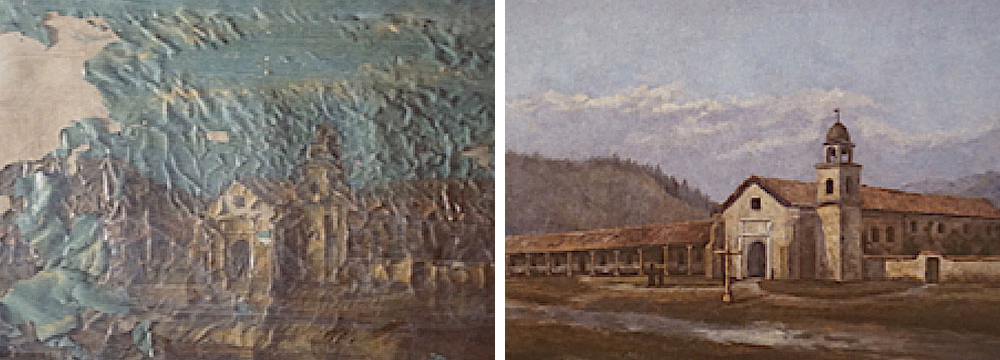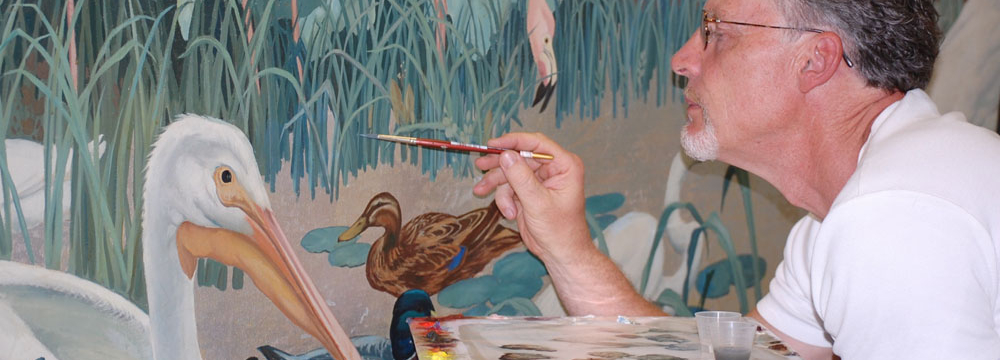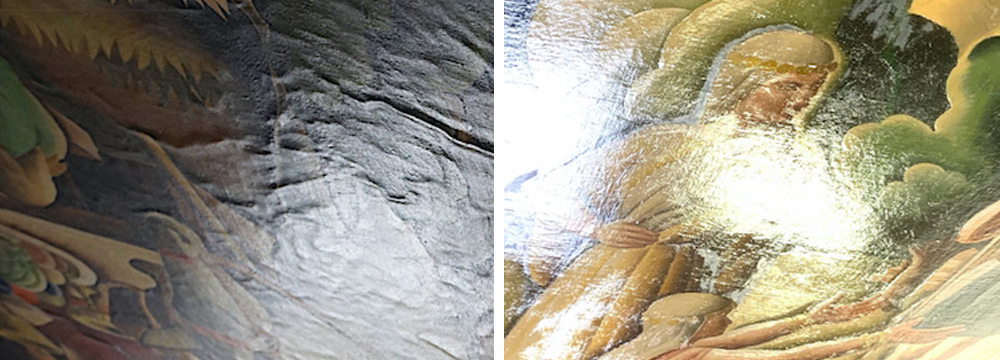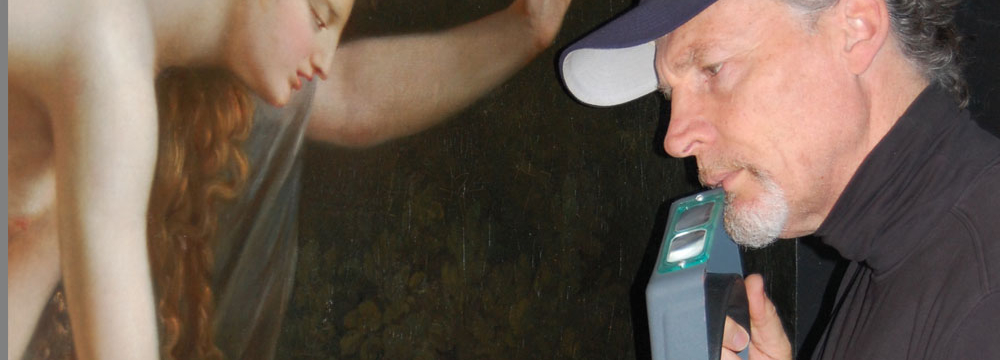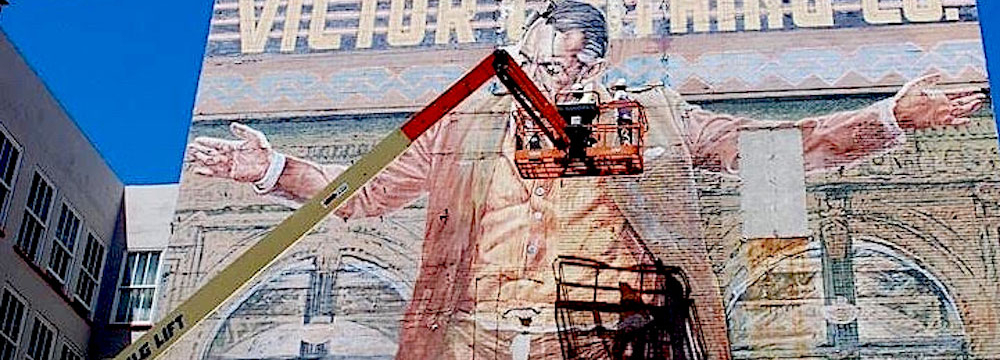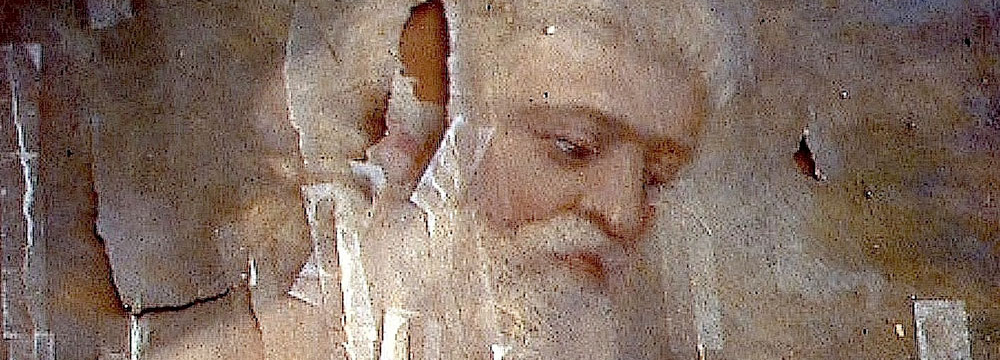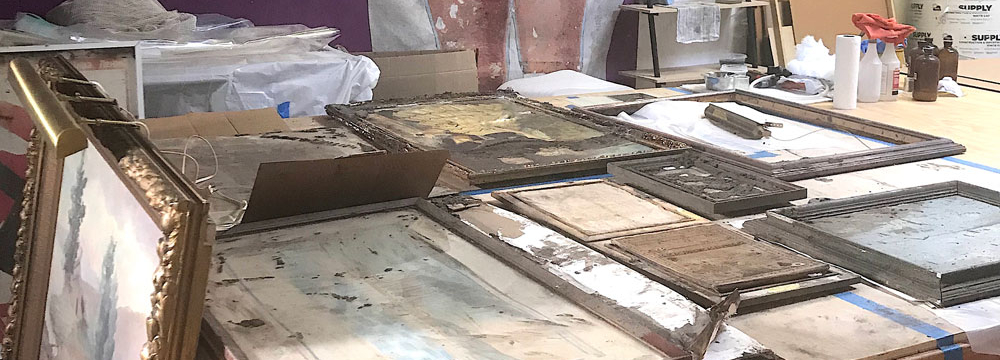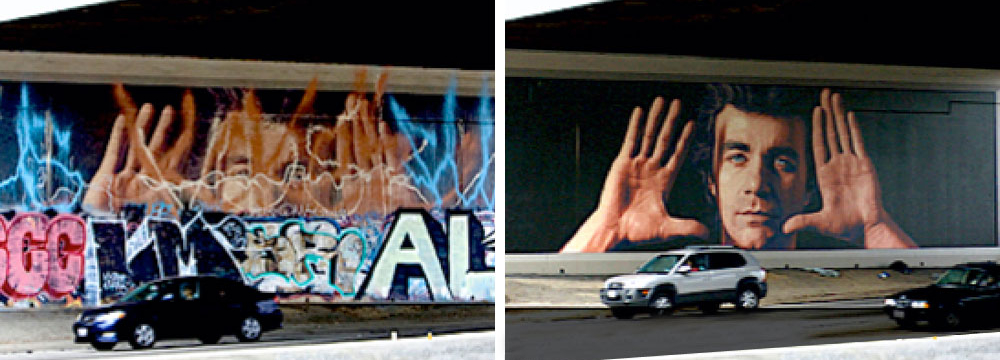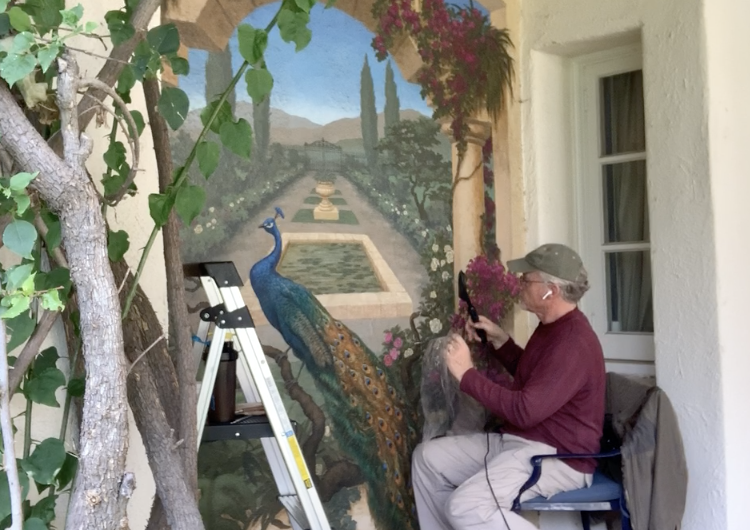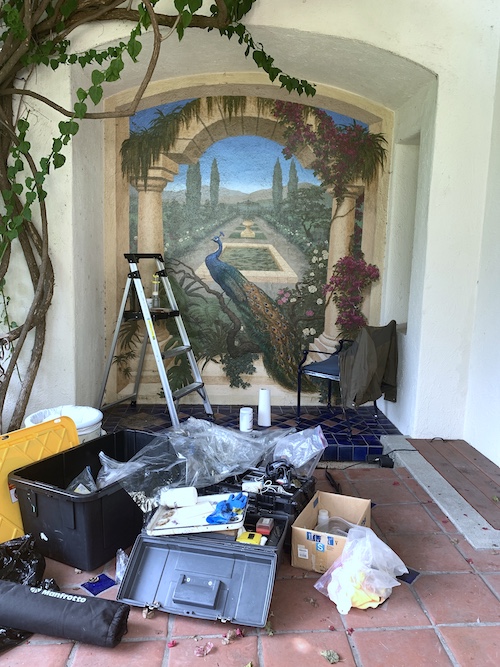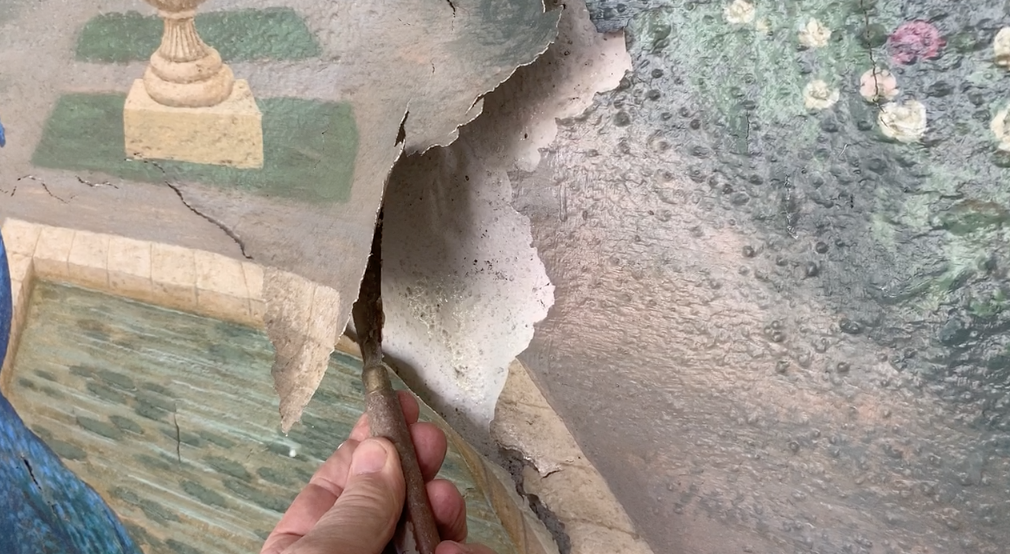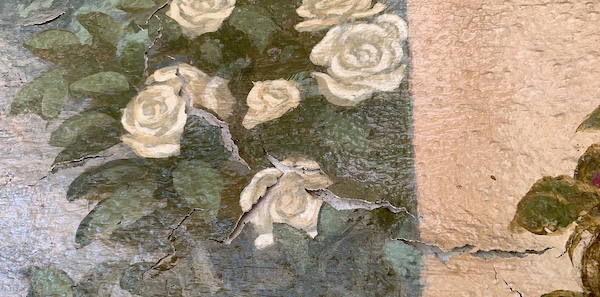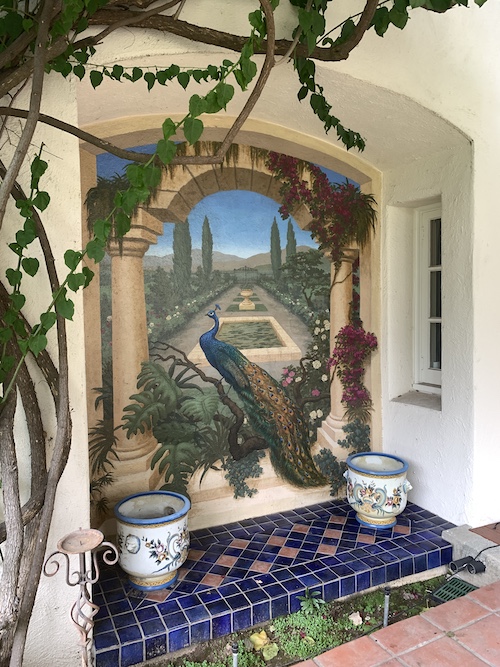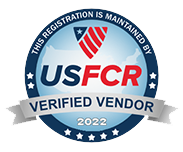Expert painting restoration treatments saved a gorgeous outdoor mural in Pasadena CA (Los Angeles area) this week… and the mural isn’t even that old. Painted in 2004, the mural was painted onto a covered garden wall over a paint layer that wasn’t stable. So, once again, contemporary art is more temporary art than it should be due to the lack of knowledge and craftsmanship of the artist.
But it is a gorgeous painting of a peacock in a garden setting that most anyone would love to have on their wall in the garden. The surrounding features in this garden makes the whole “art presentation” very special and zen-like. Bougainvillea surrounds the mural which also has the flowering vine depicted and the receding perspective that takes your eye back into the distance makes the mural look like a passageway into another part of a manicured garden.
Here is the quick 1 minute video of the treatments to save the mural that was peeling off the wall:
Most often, cases of flaking paint are caused by maintenance problems… which are totally avoidable! And given that this disintegration of the painting is the fault of the poor craftsmanship of the artist, this instance was too avoidable. But, now, what to do?!
The mural conservation treatments should at a minimum include the injection of conservation quality adhesives in order to consolidate (stabilize) the flaking. Then local applications of heat are used to set the adhesive and relax the paint layers so that they go back into plane. As this painting cracked, the paint pulled apart and the cracks in the paint opened up. So, to make them disappear, they would need to be filled and then inpainted. And finally, since this painting has a thick layer of varnish, then complete revarnish was considered important.
One of our blog readers, Anne, imagining similar problems on her paintings she owns, ask having been in a distressing situation, asked on September 30th: “What if a painting has a few small holes in it…is it repairable? And how does one find an art auction catalog of an item if there are numbers, letters/words on back of canvas? And if one likes their painting, how much would it cost to repair holes in a canvas? Does the flaking/some chipping matter? If someone wanted to buy it, wouldn’t they rather see it in such a state and find their own restorer?”
“Once I sent pics of my painting and they said it was a reproduction but I hardly believed that their computer anaylsis of my painting was correct when even their Biography of the artist was not correct. Shame shame…this was a waste of time and money. Anyway, I need to find provenance no matter what.
Here is my answer:
All good questions Anne. Here are the answers:
- What if a painting had a few small holes in it…is it repairable? Yes, and you have two choices, usually: a. stabilize the problems but don’t work on problems that are only aesthetic (cleaning or inpainting) and b. do the conservation work to make the damage disappear.
- And how does one find an art auction catalog of an item if there are numbers, letters/words on back of canvas? Sometimes the numbers are not from an auction. The numbers could be a collector or artist’s inventory, a shipping ID or? If you KNOW that the number relates to an auction sale, then you can call the main auction houses and inquire if the numbers and abels are theirs, talk to the painting specialist and ask for some coaching.
- If one likes their painting, how much would it cost to repair holes in a canvas? How big of holes, how many, how much paint in missing, how big is the painting and other questions influence the cost. A ball park can be given from a photo but the solid estimate can only be given from looking at the actual artwork.
- Does the flaking/some chipping matter? Yes, it usually means the condition is unstable and more damage/loss is forthcoming. Stabilizing the structure of the flaking is the highest priority. Making it LOOK better, is secondary. If you don’t stabilize the deterioration, you’ll be throwing money away.
- If someone wanted to buy it, wouldn’t they rather see it in such a state and find their own restorer? The very experienced collectors and dealers usually have their own conservator to consult. Most “regular” collectors, however, like to buy their artwork already looking wonderful. Also consider that if a painting looks damaged or is ugly condition-wise, these will be reasons that the buyer will use to beat up the seller for a lower price. I see this scenario everyday.
- Some opinions can be given off of a photo but the most accurate opinion will be from the “expert” seeing the artwork first hand.
Did I answer all your questions? Thanks for leaving comments. I encourage everyone to stay plugged in.
Scott M. Haskins
If you would like to know more about our background in mural
restoration:
For our mural capability statement:
https://www.fineartconservationlab.com/mural/
For our mural consultation statement:
https://www.fineartconservationlab.com/consultations/
Our mural conservation videos on YouTube at
https://www.youtube.com/playlist?list=PLE1FF71CC598A8E79
For general mural conservation capabilities videos:
https://www.youtube.com/watch?v=ld4l6EG8T-I&index=13&list=PLE1FF71CC598A8E79
So, that should give you plenty to go through. Feel free to call me or
write back if you have more questions:
Scott M. Haskins 805 570 4140 faclartdoc@gmail.com

